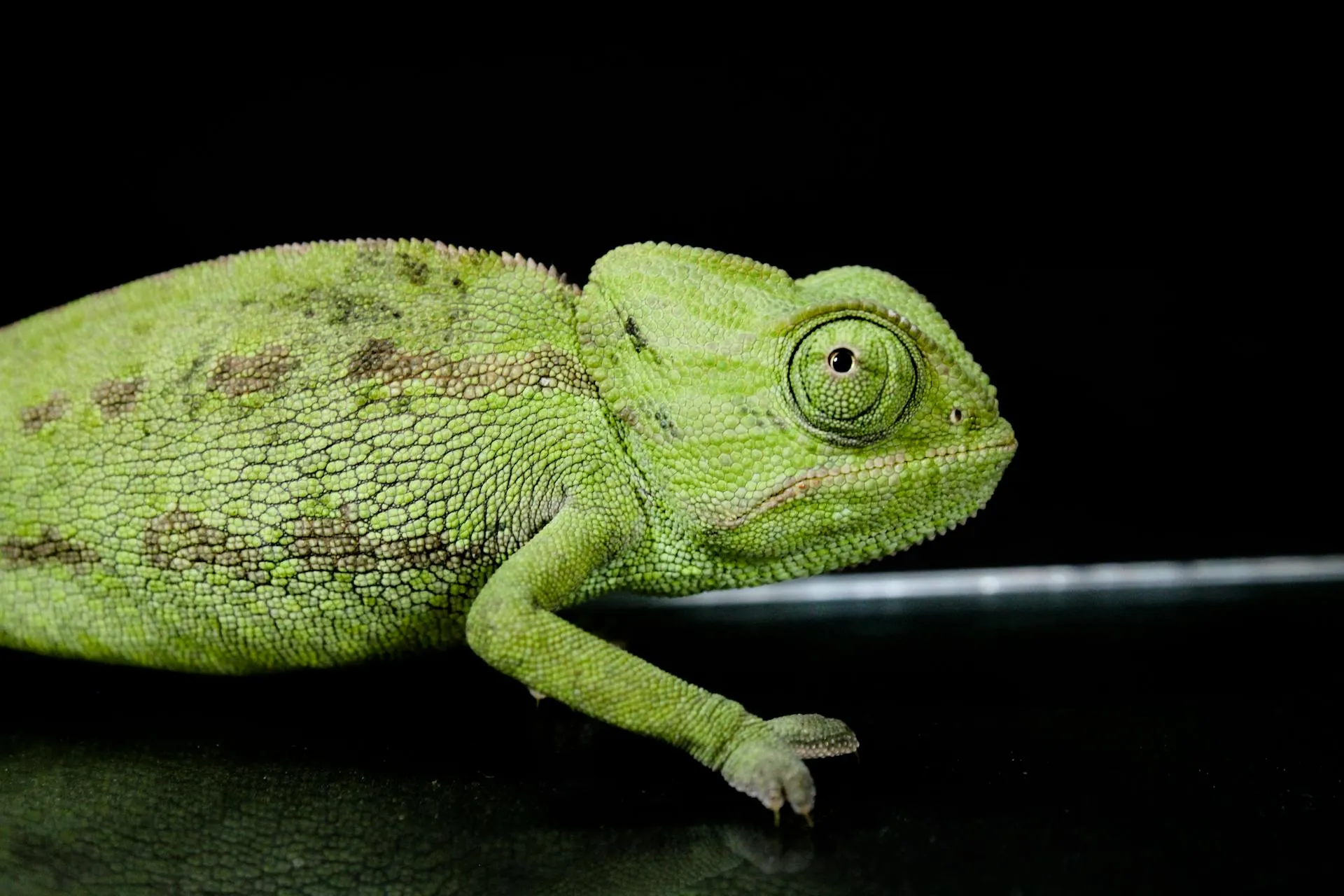Reptiles make fascinating pets, but unlike more traditional animals, their habitats require specific care and attention to detail. At Galena Animal Medical Clinic, your Galena, MD, pet clinic, we understand the importance of providing your reptile with a clean, healthy environment to thrive. Regular cleaning and proper maintenance of your reptile’s habitat aren’t just about aesthetics; they are essential for your pet’s overall health and well-being.
In this blog, we’ll guide you through the best practices for cleaning and maintaining your reptile’s habitat to ensure they have a safe, comfortable, and hygienic space to call home.
Why a Clean Habitat is Essential for Your Reptile
Reptiles, unlike mammals, rely heavily on their environment to regulate body temperature, humidity, and activity levels. A dirty or poorly maintained habitat can lead to stress, illness, and potentially even death. The accumulation of waste, bacteria, and mold in the enclosure can lead to respiratory infections, skin conditions, and digestive issues in your reptile.
Keeping your reptile’s habitat clean not only helps to prevent disease but also contributes to their happiness. A tidy environment reduces stress, promotes healthy behavior, and encourages your reptile to stay active, exploring their surroundings.
Click here for our prior reptile care blog post.
Tips for Cleaning Your Reptile’s Habitat
1. Regularly Remove Waste
The first step to maintaining a clean reptile habitat is daily waste removal. Depending on your reptile’s species, waste can include uneaten food, feces, or even skin shedding. Clean these areas out as soon as possible to prevent the buildup of bacteria and odor. For reptiles that use a designated “bathroom” area (like turtles or lizards), be sure to clean that area thoroughly each day.
For other reptiles, such as snakes or amphibians, spot cleaning is key. Remove waste as soon as you see it, and change the substrate if needed.
2. Change Bedding/Substrate Regularly
The substrate in your reptile’s enclosure, whether it’s sand, wood chips, coconut husk, or any other material, can harbor bacteria and moisture that lead to mold growth if left unchecked. The frequency with which you change the bedding depends on your reptile’s species and the type of substrate used. For reptiles that spend a lot of time on the floor of their habitat, changing the substrate every 2-3 weeks is recommended.
For species that shed often, such as snakes, cleaning the bedding more frequently can help prevent mites or other pests from causing harm to your pet. Always replace the bedding with fresh material, and ensure it’s clean and dry before reintroducing your reptile to the enclosure.
3. Clean the Water Dish and Food Bowls Daily
A clean water dish is essential for your reptile’s hydration and overall health. Change the water daily, as it can become contaminated with food remnants or waste quickly. If your reptile enjoys soaking in water, be sure to clean the dish thoroughly with reptile-safe cleaners to prevent algae or bacteria from building up.
Similarly, clean the food bowls after each feeding to ensure your pet doesn’t ingest spoiled or contaminated food. Depending on your reptile’s diet, leftover food can decay quickly, so it’s important to keep the feeding area clean.
4. Maintain Proper Light, Humidity and Temperature Levels
The light, humidity, and temperature in your reptile’s habitat play a significant role in their health. Reptiles, especially tropical species, require specific humidity levels to stay hydrated and shed their skin properly. Use a hygrometer to monitor humidity levels, and add moisture to the enclosure if necessary.
Temperature is just as important—different reptiles require different temperature ranges. Make sure to set up a heat gradient (with a warm side and a cool side) to give your reptile options. Clean the heating elements regularly and check for signs of wear or damage. Maintaining consistent temperatures ensures that your reptile feels comfortable and can digest food properly.
Reptiles Magazine has an article on reptile lighting, which you can find here.
5. Use Safe Cleaning Products
When cleaning your reptile’s habitat, it’s important to use safe, non-toxic cleaning products. Harsh chemicals, such as bleach, can be harmful to your reptile, causing respiratory issues or skin irritation. Opt for reptile-safe cleaners that are designed to remove bacteria without posing a risk to your pet.
If you prefer natural cleaning methods, vinegar and water can be an effective and safe solution for cleaning the enclosure. Be sure to rinse thoroughly after cleaning to avoid any residue that might harm your reptile.
6. Clean the Decorations and Furnishings
Your reptile’s enclosure may include decorations, rocks, plants, or logs, all of which should be cleaned regularly. These items can accumulate dirt, fecal matter, and mold, so it’s important to disinfect them often. For rocks and branches, scrub them with a safe, mild cleaning solution to remove any debris.
Artificial plants can also trap dirt and bacteria, so these should be cleaned weekly. Ensure that everything in the habitat, including basking rocks or hiding spots, is free from bacteria, mold, or other contaminants.
7. Monitor for Signs of Illness or Pests
As you clean your reptile’s habitat, take the opportunity to inspect your pet for signs of illness, stress, or pests. Look for changes in behavior such as lethargy, refusal to eat, or abnormal shedding. If you notice any signs of illness or skin abnormalities, consult with your veterinarian.
Pests, like mites, can often hide in bedding or decor. If you find signs of pests, clean the entire enclosure and replace bedding, and seek advice from a vet on safe treatments to remove them.
Maintaining a Healthy Habitat
Keeping your reptile’s habitat clean is an ongoing process, but it’s well worth the effort to bolster your pet’s health and happiness by creating an environment that encourages healthy behavior, proper growth, and a long, happy life.
The Royal Society For The Prevention of Cruelty For Animals has an article on caring for reptiles and exotics here.
Frequently Asked Questions
1. How often should I clean my reptile’s enclosure?
You should spot clean the habitat daily, removing waste and uneaten food. A full cleaning, including substrate changes, should be done every 2-3 weeks, or more often for species that shed heavily.
2. What kind of substrate is best for my reptile?
The best substrate depends on your reptile’s species. Some reptiles require sand, while others need coconut husk, bark chips, or paper bedding. Always choose a substrate that matches your reptile’s natural environment. Ask your vet for advice on this.
3. Can I use regular household cleaners to clean the habitat?
No, you should use reptile-safe cleaners or natural solutions like vinegar and water to avoid harmful chemicals. Regular household cleaners may contain toxins that can harm your reptile.
4. How can I ensure my reptile is getting enough humidity?
Use a hygrometer to monitor humidity levels and consider adding a humidity box or misting the enclosure if necessary. Some reptiles, like amphibians, require very high humidity levels to stay healthy.
5. What should I do if I find pests in my reptile’s habitat?
If you find pests like mites, clean the entire habitat thoroughly, replace the bedding, and consult with your veterinarian for safe pest control options.
Schedule An Appointment At Our Galena, MD Vet Clinic
At Galena Animal Medical Clinic, your Galena, MD, pet clinic, we want to help you provide the best care for your reptile. A clean, well-maintained habitat is essential to their health and happiness. If you need further guidance on reptile habitat care, feel free to reach out to us.
Are you looking for more expert advice on how to care for your reptile? Schedule an appointment with our experienced veterinarians today!
Click here to visit our Service page and find out more about our clinic and the animals we treat. You can also go here to learn more about our Critical Care services, or go here to learn more about our Exotic Pet care offerings.
This blog is meant to be informational only. Always consult with your veterinarian for the right medical advice, diagnosis, or treatment plan for your pet and follow their advice.







!Social Media Icons